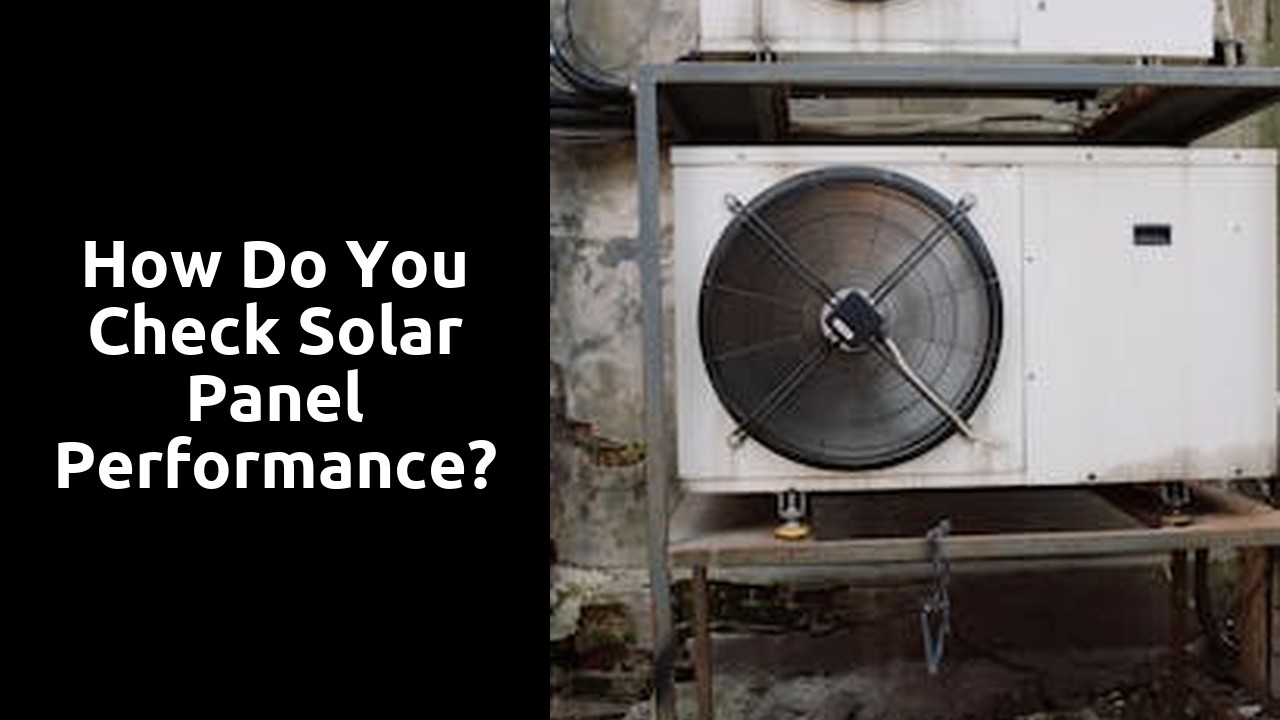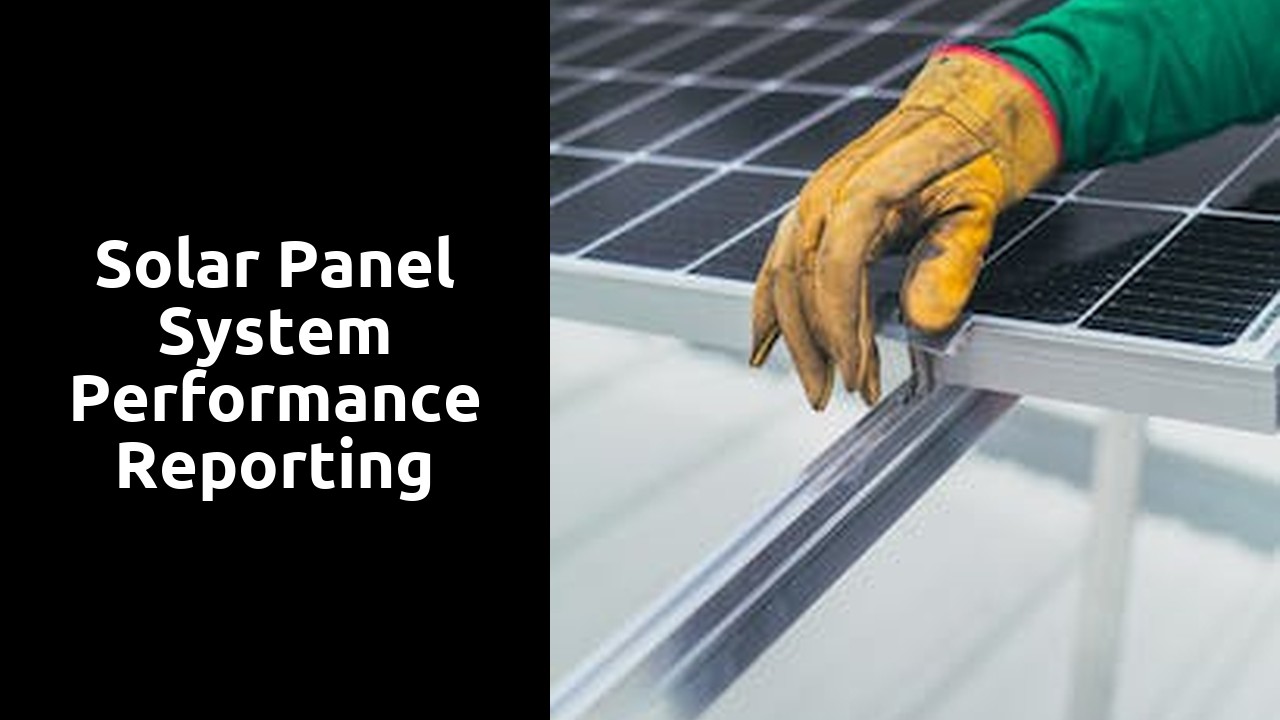
Troubleshooting Solar Panel Issues
Troubleshooting solar panel issues is crucial for maintaining optimal system performance. One common problem could be related to a poor connection between the solar panels and the inverter. This issue can significantly affect the efficiency of the system and lead to lower energy production. Regularly inspecting and tightening the connections can help rectify this problem and improve Solar Panel System Performance Reporting.
Another issue to watch out for is shading. Even a small amount of shading on a solar panel can impact its performance. It is important to assess the area around the solar panels to ensure that there are no obstructions causing shading. By addressing shading issues promptly, you can enhance the overall efficiency of the system and achieve better Solar Panel System Performance Reporting.
Identifying Poor Connection Points
When assessing the performance of a solar panel system, identifying poor connection points is crucial. Poor connection points can significantly impact the efficiency and output of the system, leading to decreased energy production. To ensure optimal performance, regular inspection of connection points should be conducted as part of routine maintenance procedures. By carefully examining the wiring, terminals, and junction boxes, any signs of wear, corrosion, or loose connections can be detected early on. Solar panel system performance reporting must include a detailed assessment of connection points to highlight any areas that require immediate attention to maintain efficient operation.
Effective identification of poor connection points involves a thorough visual inspection of all components within the system. A common indicator of poor connections is discoloration or heat damage at the junction points. Additionally, loose or frayed wiring can lead to inefficiencies and potential safety hazards. To enhance the longevity and performance of the solar panel system, addressing and rectifying poor connection points should be prioritized. Integrating this aspect into Solar Panel System Performance Reporting will provide valuable insights for improving system efficiency and overall productivity.
Enhancing Solar Panel Output
To maximize the output of your solar panel system, implementing appropriate tilt and orientation adjustments is crucial. By adjusting the angle of your solar panels to align with the sun's position throughout the day, you can significantly enhance their efficiency. Ensuring that the panels face north in the Southern Hemisphere or south in the Northern Hemisphere can help in capturing more sunlight and boosting overall energy production. These adjustments can make a substantial difference in the amount of energy generated by your system and improve your overall Solar Panel System Performance Reporting.
In addition to adjusting the tilt and orientation of your solar panels, keeping them clean and free of debris is essential for optimal performance. Regularly cleaning your panels to remove dirt, dust, and any other obstructions will help maintain their efficiency. Dirty panels can obstruct sunlight from being absorbed properly, leading to decreased energy production. By incorporating a cleaning routine into your maintenance schedule, you can ensure that your panels are functioning at their best and contributing to better Solar Panel System Performance Reporting.
Implementing Tilt and Orientation Adjustments
One efficient way to enhance the performance of your solar panel system is by adjusting the tilt and orientation of the panels. It's essential to ensure that the panels are facing the optimal direction to receive the maximum amount of sunlight throughout the day. By making adjustments to the tilt and orientation of the solar panels, you can significantly increase their energy output, which in turn enhances the overall efficiency of your solar panel system. These adjustments may vary depending on your geographic location, so it's crucial to consider factors such as the angle of the sun and any potential obstructions that may affect sunlight exposure to the panels.
Implementing tilt and orientation adjustments not only boosts the energy production of your solar panels but also contributes to the overall effectiveness of your system. Regularly monitoring and adjusting the tilt and orientation of your panels can help you achieve optimal energy conversion rates, leading to more efficient energy generation for your home or business. By incorporating these adjustments into your maintenance routine, you can ensure that your solar panel system operates at its peak performance levels. Solar Panel System Performance Reporting is vital to track and evaluate the impact of these adjustments on your system's efficiency over time.
Testing Solar Panel Efficiency
When assessing the efficiency of solar panels, it is essential to conduct regular performance audits to ensure optimal functionality. Monitoring the energy output of the panels through performance audits provides valuable insights into the overall efficiency of the system. Solar Panel System Performance Reporting allows for the identification of any potential issues or underperformance, enabling timely intervention to maintain peak performance levels. Additionally, implementing tilt and orientation adjustments can further enhance the output of solar panels, maximising the absorption of sunlight and overall energy generation.
Conducting routine performance audits involves evaluating the amount of energy generated by the solar panels against their capacity. By comparing actual output with expected output, any discrepancies can be promptly identified and addressed. This proactive approach to testing solar panel efficiency not only ensures the longevity of the system but also enhances its overall performance, resulting in increased energy savings and environmental benefits.
Conducting Performance Audits
When it comes to ensuring the optimal functionality of your solar panel system, conducting regular performance audits is crucial. These audits provide valuable insights into the efficiency and output of your system, allowing you to identify any potential issues or areas for improvement. By closely monitoring the performance of your solar panels through these audits, you can effectively track their effectiveness and make informed decisions to enhance their overall output. Solar Panel System Performance Reporting is essential in maintaining the long-term sustainability and efficiency of your solar panel system.
To conduct a comprehensive performance audit, it is recommended to monitor key performance indicators such as energy production levels, system downtime, and overall efficiency. By analysing this data regularly, you can pinpoint any potential issues and address them promptly to ensure your solar panel system operates at its peak performance. Additionally, by comparing current performance data with historical records, you can gauge the progress and effectiveness of any enhancements or adjustments made to your system over time, providing valuable insights for future optimisation strategies. Solar Panel System Performance Reporting plays a vital role in maximising the return on investment of your solar panel system and ensuring its long-term sustainability.
FAQS
How can I troubleshoot solar panel issues?
To troubleshoot solar panel issues, you can start by checking for any shading, soiling, or damage to the panels. Ensure all connections are secure and inspect the wiring for any signs of wear or damage.
How can I identify poor connection points in my solar panel system?
You can identify poor connection points by visually inspecting the wiring for loose connections, corrosion, or any signs of damage. Using a multimeter can also help in checking the continuity and voltage at various points in the system.
What are some ways to enhance solar panel output?
One way to enhance solar panel output is by implementing tilt and orientation adjustments to maximize exposure to sunlight. Regularly cleaning the panels to remove dirt and debris can also improve efficiency.
How can I implement tilt and orientation adjustments for my solar panels?
Tilt and orientation adjustments can be implemented by changing the angle of the panels to align them more accurately with the sun's path throughout the day. This can be done manually or using adjustable mounting systems.
How can I test the efficiency of my solar panels?
You can test the efficiency of your solar panels by conducting performance audits regularly. This involves measuring the electricity output of the panels under different conditions and comparing it to the expected output.
How do I conduct performance audits for my solar panel system?
Performance audits for solar panels involve monitoring the energy production over a period of time, checking for any discrepancies between expected and actual output. This can help in identifying any issues affecting the performance of the system. """
